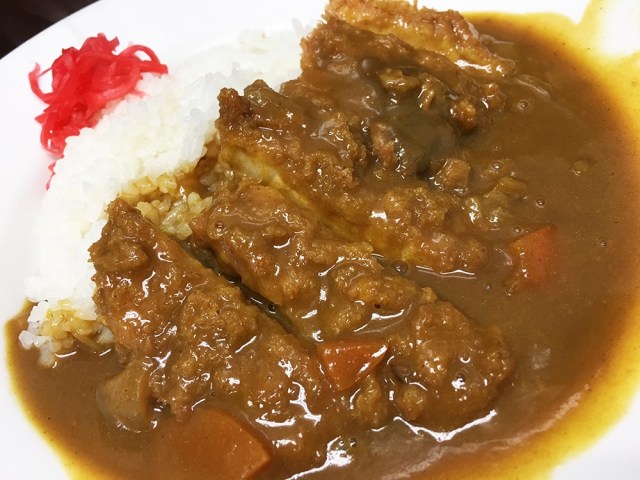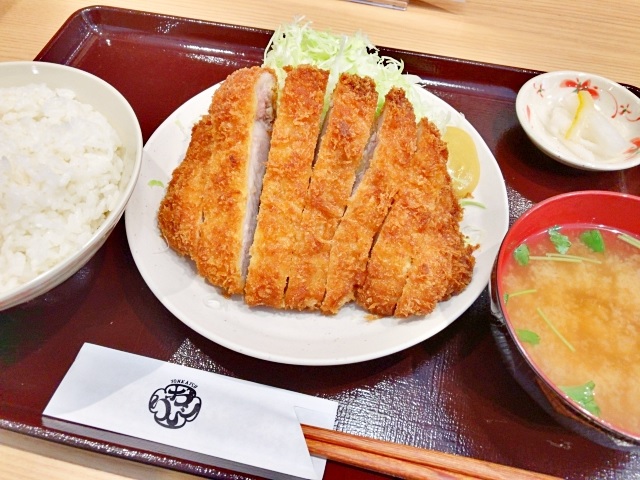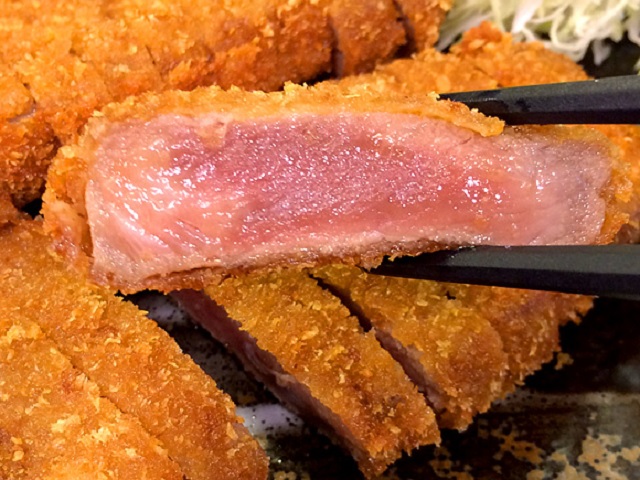
Embassy of Japan in the U.K. posts video explaining what katsu is and isn’t, and we delve into the non-pork varieties.
The purpose of an embassy is two-fold. Its first mission is to assist and protect citizens of its home country while abroad, but just as important is its role in representing and sharing its home-country culture with citizens of its host countries.
In pursuing that second objective, the embassy of Japan in the U.K.’s official English-language Twitter account has put out an informative video explaining what the Japanese food katsu is…and also what it isn’t. Recently, there’s been a stubborn perception in the U.K. that “katsu” is a type of Japanese curry, but the truth is actually very different, as the video shows.
🗣️ “Katsu is a type of curry, right?” ❌🙅
— Embassy of Japan UK (@JAPANinUK) August 5, 2020
Find out why #katsu may be more than what you think 👇#washoku #JPNUKseason #JapanUK pic.twitter.com/ku1UWXFWgT
So nope, katsu isn’t a kind of curry. You can have curry without katsu, and you can also enjoy katsu in a variety of ways that are completely curry-free.
It’s pretty easy to keep straight as long as you know the etymology of the word katsu, which is actually a corrupted pronunciation of the English word “cutlet.” Katsu and cutlet might seem worlds apart, but in the Japanese language almost all consonants have to be followed by a vowel, and even then, a number of consonant-vowel combinations that would be possible in English, like “tu,” don’t exist. Because of that, “cutlet” became “katsuretsu,” and while a mouthful of “katsuetsu” is a delicious thing to eat, the four-syllable word is a bit of a mouthful to say, so nine times out of ten “katsuretsu” gets shortened to just “katsu.”
So if you put a cutlet on some curry rice, then that’s not “katsu,” it’s “katsu curry.” A cutlet on top of a donburi/bowl of rice? Katsudon. And a cutlet between two slices of bread? That’s a katsu sando, since in the same way cutlet became katsuretsu and then katsu, in Japanese “sandwich” became “sandouicchi,” which then gets shortened to “sando” for convenience.
But while the theme of the video is that katsu just means cutlet, there’s actually a little extra nuance to the word. Though you can slice and fry any kind of meat, when Japanese people say “katsu” they’re usually referring to a pork cutlet. Technically, “pork cutlet” should be “tonkatsu,” but “tonkatsu” refers to a pork cutlet served by itself, not on top of, in, or sandwiched by any other foodstuff.
▼ Tonkatsu
When you hear “katsu curry,” “katsudon,” or “katsu sando,” though, you can be sure that the cutlet you’re getting is a pork one. So what about other kinds of meat?
● Beef: The Japanese word for beef is “gyuniku,” so a beef cutlet is “gyu katsu.” However, the English word “beef,” which becomes “bifu,” is also readily understood in Japan, so “bifu katsu” is another way to say “beef cutlet.”
● Chicken: The Japanese word for chicken is “toriniku,” so a chicken cutlet should be “tori katsu,” right? Nope, sorry. For some reason, “tori katsu” never really caught on as a word, and instead everyone says “chikin katsu”/”chicken katsu.”
● Shrimp: You may never have thought of the possibility of using shrimp to make a cutlet, but it’s a delicious creation that you can often find as part of a hamburger-bun sandwich at Japanese fast food restaurants. In the opposite situation from chicken katsu, although “shurinpu” (from “shrimp”) is a word in Japanese, for shrimp cutlets the sea creature’s Japanese name, “ebi,” is used, making the term “ebi katsu.”
▼ Gyu katsu
From there, the various cutlets all work like the standard katsu. Curry with beef cutlet? Gyu katsu/beef katsu curry. Chicken cutlet rice bowl? Chicken katsudon. Shrimp cutlet sandwich? Ebikatsu sando.
Now, if you’ll excuse us, we’ve got a very difficult decision to make now that we’ve reminded ourselves how many katsu-related options we have for lunch.
Source: Twitter/@JAPANinUK
Top, insert images ©SoraNews24
● Want to hear about SoraNews24’s latest articles as soon as they’re published? Follow us on Facebook and Twitter!
Follow Casey on Twitter, where he’s never felt bad while eating a katsu sando.



 Katsudon vs. tonkatsu vs. katsu sandwich – What’s the best way to eat pork cutlet in Japan?
Katsudon vs. tonkatsu vs. katsu sandwich – What’s the best way to eat pork cutlet in Japan? A whole new way to eat katsu: Cold katsu soba【Taste test】
A whole new way to eat katsu: Cold katsu soba【Taste test】 Beyond katsu curry: Tare katsu curry now being served at Coco Ichibanya
Beyond katsu curry: Tare katsu curry now being served at Coco Ichibanya Katsu curry rice you can eat with your hands? Mos Burger unveils new Rice Burger Katsu Curry
Katsu curry rice you can eat with your hands? Mos Burger unveils new Rice Burger Katsu Curry We try Ajinomoto’s European Chicken Katsu Curry Style frozen gyoza that has no katsu in it
We try Ajinomoto’s European Chicken Katsu Curry Style frozen gyoza that has no katsu in it Play games, learn, and get your fortune at Ginza’s limited-time Tsunaguu “Shrine of the Future”
Play games, learn, and get your fortune at Ginza’s limited-time Tsunaguu “Shrine of the Future” Japanese beef bowl chain Sukiya’s 2026 Smile Box lucky bag basically pays for itself
Japanese beef bowl chain Sukiya’s 2026 Smile Box lucky bag basically pays for itself The best Starbucks Japan Frappuccinos we want to drink again in 2026
The best Starbucks Japan Frappuccinos we want to drink again in 2026 Japan Airlines is giving away free domestic flights to international tourists
Japan Airlines is giving away free domestic flights to international tourists Starbucks Japan unveils New Year’s collection for 2024, with daruma, dragons and Mt Fuji for luck
Starbucks Japan unveils New Year’s collection for 2024, with daruma, dragons and Mt Fuji for luck 7 great places to see Mt. Fuji from without having to climb it
7 great places to see Mt. Fuji from without having to climb it Japanese confectionary chain Chateraise opens first 24-hour branch with self-checkout
Japanese confectionary chain Chateraise opens first 24-hour branch with self-checkout Serpentine Winnie the Pooh Year of the Snake plushies, Mickey and Baymax daruma arrive in Japan
Serpentine Winnie the Pooh Year of the Snake plushies, Mickey and Baymax daruma arrive in Japan Haunted hospital near Mt Fuji re-opens after renovation at Fuji-Q Highland, and it’s terrifying
Haunted hospital near Mt Fuji re-opens after renovation at Fuji-Q Highland, and it’s terrifying We go behind the scenes at Japan Airlines’ in-flight meal factory【Photos】
We go behind the scenes at Japan Airlines’ in-flight meal factory【Photos】 Starbucks Japan ready to get Year of the Horse started with adorable drinkware and plushies【Pics】
Starbucks Japan ready to get Year of the Horse started with adorable drinkware and plushies【Pics】 Cyberpunk anime meets traditional culture in Ghost in the Shell gold leaf Japanese changing screens
Cyberpunk anime meets traditional culture in Ghost in the Shell gold leaf Japanese changing screens Hayao Miyazaki says Happy New Year to Studio Ghibli fans with new art for Year of the Horse
Hayao Miyazaki says Happy New Year to Studio Ghibli fans with new art for Year of the Horse Hello Kitty Choco Egg figures are an adorable trip through three periods of Japanese pop culture【Pics】
Hello Kitty Choco Egg figures are an adorable trip through three periods of Japanese pop culture【Pics】 We found possibly the quietest Japanese-style hotel in Tokyo’s bustling Shinjuku district
We found possibly the quietest Japanese-style hotel in Tokyo’s bustling Shinjuku district 7-Eleven Japan’s ramen-cooking robot whipped us up a bowl of noodles【Taste test】
7-Eleven Japan’s ramen-cooking robot whipped us up a bowl of noodles【Taste test】 Sumo Sanrio! Hello Kitty and pals team up with Japan Sumo Association for new merch【Pics】
Sumo Sanrio! Hello Kitty and pals team up with Japan Sumo Association for new merch【Pics】 Japan’s oldest largetooth sawfish in captivity back on display in Mie Prefecture
Japan’s oldest largetooth sawfish in captivity back on display in Mie Prefecture More Than a Capsule Stay: Why Solo Travelers Choose “global cabin Yokohama Chinatown”
More Than a Capsule Stay: Why Solo Travelers Choose “global cabin Yokohama Chinatown” 7-Eleven Japan starts new temporary luggage storage service in over 300 branches
7-Eleven Japan starts new temporary luggage storage service in over 300 branches Disillusionment at Tsukiji’s tourist-target prices led us to a great ramen restaurant in Tokyo
Disillusionment at Tsukiji’s tourist-target prices led us to a great ramen restaurant in Tokyo Starbucks teams up with 166-year-old Kyoto doll maker for Year of the Horse decorations【Photos】
Starbucks teams up with 166-year-old Kyoto doll maker for Year of the Horse decorations【Photos】 Tokyo considering law requiring more trash cans following litter increase in heavily touristed area
Tokyo considering law requiring more trash cans following litter increase in heavily touristed area Tokyo’s Tsukiji sushi neighborhood asks tour groups to stay away for the rest of the month
Tokyo’s Tsukiji sushi neighborhood asks tour groups to stay away for the rest of the month Tokyo event lets you travel back in time, for free, to celebrate 100 years since Showa era start
Tokyo event lets you travel back in time, for free, to celebrate 100 years since Showa era start Sanrio theme park in Japan announces plans to expand into a Sanrio resort
Sanrio theme park in Japan announces plans to expand into a Sanrio resort Japan may add Japanese language proficiency, lifestyle classes to permanent foreign resident requirements
Japan may add Japanese language proficiency, lifestyle classes to permanent foreign resident requirements Stamina-destroying “Paralysis Noodles” are Tokyo’s newest over-the-top ramen innovation
Stamina-destroying “Paralysis Noodles” are Tokyo’s newest over-the-top ramen innovation Survey asks foreign tourists what bothered them in Japan, more than half gave same answer
Survey asks foreign tourists what bothered them in Japan, more than half gave same answer Japan’s human washing machines will go on sale to general public, demos to be held in Tokyo
Japan’s human washing machines will go on sale to general public, demos to be held in Tokyo Japan’s deadliest food claims more victims, but why do people keep eating it for New Year’s?
Japan’s deadliest food claims more victims, but why do people keep eating it for New Year’s? We deeply regret going into this tunnel on our walk in the mountains of Japan
We deeply regret going into this tunnel on our walk in the mountains of Japan Studio Ghibli releases Kodama forest spirits from Princess Mononoke to light up your home
Studio Ghibli releases Kodama forest spirits from Princess Mononoke to light up your home Major Japanese hotel chain says reservations via overseas booking sites may not be valid
Major Japanese hotel chain says reservations via overseas booking sites may not be valid Put sesame oil in your coffee? Japanese maker says it’s the best way to start your day【Taste test】
Put sesame oil in your coffee? Japanese maker says it’s the best way to start your day【Taste test】 No more using real katana for tourism activities, Japan’s National Police Agency says
No more using real katana for tourism activities, Japan’s National Police Agency says Starbucks Japan reveals new sakura drinkware collection, inspired by evening cherry blossoms
Starbucks Japan reveals new sakura drinkware collection, inspired by evening cherry blossoms Updated cherry blossom forecast shows extra-long sakura season for Japan this year
Updated cherry blossom forecast shows extra-long sakura season for Japan this year All-plant-based katsu curry arrives at Ikea Japan
All-plant-based katsu curry arrives at Ikea Japan The U.K. thinks Japanese curry is katsu curry, and people aren’t happy about it
The U.K. thinks Japanese curry is katsu curry, and people aren’t happy about it McDonald’s releases Katsu Curry Chicken McNuggets, but do they taste Japanese?
McDonald’s releases Katsu Curry Chicken McNuggets, but do they taste Japanese? Katsu Curry Ramen: An unusual Japanese dish that combines three great meals in one
Katsu Curry Ramen: An unusual Japanese dish that combines three great meals in one 10-second Japanese katsu curry – Is this the world’s most amazing instant food?【Video】
10-second Japanese katsu curry – Is this the world’s most amazing instant food?【Video】 Here’s what US$90 worth of katsu curry looks like at CoCo Ichibanya: A mountain of cutlets!
Here’s what US$90 worth of katsu curry looks like at CoCo Ichibanya: A mountain of cutlets! Celebrities slam katsu curry, divide netizens: “It’s a dish where 1+1 never actually makes 2”
Celebrities slam katsu curry, divide netizens: “It’s a dish where 1+1 never actually makes 2” Japanese black curry “experiment” takes place at an unlikely restaurant branch in Tokyo
Japanese black curry “experiment” takes place at an unlikely restaurant branch in Tokyo How to make an imitation katsudon pork cutlet bowl using imitation katsu【SoraKitchen】
How to make an imitation katsudon pork cutlet bowl using imitation katsu【SoraKitchen】 Salmon katsudon? Tokyo restaurant’s specialty is like a deep-fried sashimi lunch【Photos】
Salmon katsudon? Tokyo restaurant’s specialty is like a deep-fried sashimi lunch【Photos】 103-year-old Japanese curry rice restaurant got dish right a century ago, still serves it today
103-year-old Japanese curry rice restaurant got dish right a century ago, still serves it today Tokyo’s Curry Udon Croquette Burger is four of Japan’s favorite foods in one【Taste test】
Tokyo’s Curry Udon Croquette Burger is four of Japan’s favorite foods in one【Taste test】 Japanese-style curry rice coming to McDonald’s Japan? Mysterious tweet has fans’ fingers crossed
Japanese-style curry rice coming to McDonald’s Japan? Mysterious tweet has fans’ fingers crossed This Hokkaido-local curry chain serves curry so good it ought to be popular all over Japan
This Hokkaido-local curry chain serves curry so good it ought to be popular all over Japan Hey, Japanese taxi driver! Take us to your favorite restaurant in Tsuruga City!
Hey, Japanese taxi driver! Take us to your favorite restaurant in Tsuruga City! Cup Noodle’s Nissin develops space ramen, space curry rice for astronauts to eat among the stars
Cup Noodle’s Nissin develops space ramen, space curry rice for astronauts to eat among the stars
Leave a Reply